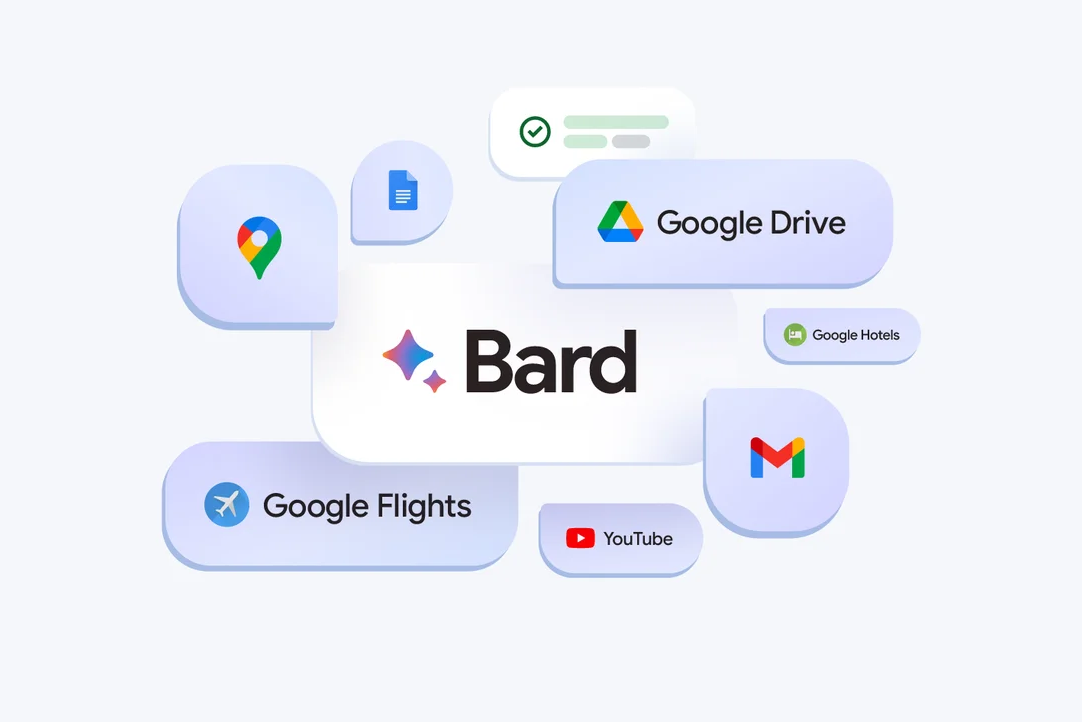 AI
AI
 AI
AI
 AI
AI
Google LLC expanded the capabilities of its Bard chatbot today, enabling it to integrate with a larger number of services including Gmail, Google Docs, Maps and YouTube.
Bard is Google’s artificial intelligence chatbot that powers a number of standalone chat experiences and also lives in its search interface where users can ask it questions and receive answers by conversing with it. With these updates, users will be able to ask it questions and have it access a much broader variety of information than before, much of it personal.
For example, a user will be able to jump into Bard and ask it to find an old email chain written in 2022 with business colleague about a tabled project plan and summarize its contents to provide a quick update. That way, they can quickly get rolling again when the project is rekindled.
Users could also have Bard grab information from different sources to plan a trip to Paris with friends, a task that would require managing Maps, Gmail and other elements. Bard could help coordinate dates that work for everyone from Gmail, look up flight information and hotel bookings, bring up Maps directions to the airport and even offer YouTube videos of events and places in Paris all in the same conversation.
All that’s made possible with extensions, which are opt-in, meaning that they can be turned on or off for each application. For applications such as Gmail, Docs and Drive, any information pulled out by Bard is not seen by human reviewers and will not be used for generating advertisements. Google also said personal information will never be used to train Bard.
Users can adjust their preferences today by accessing the extensions options page in Google Bard, which includes the ability to toggle on and off each of the different integrations. Gmail, Drive and Docs are a bundled together with Google Workspace, whereas Flights, Hotels, Maps and YouTube are individual toggles.
Google said this was all powered by updates to Google’s PaLM 2 AI model, the company’s most powerful general-purpose AI yet, which powers Bard. PaLM, which stands for the Pathways Language Model, is a transformer-based large language model developed by Google Research that improved the first iteration of PaLM with greatly increased logic and understanding in May and has led to a large number of innovations.
The company is also doubling down on its users’ ability to double-check the accuracy of Bard’s ability to produce good results. This comes after Bard’s disappointing debut when it made a factual mistake onstage regarding the James Webb telescope. With any of Bard’s responses in English, if a response can be evaluated, users can click on a “G” icon and Bard will evaluate if produced content has supporting or contradicting information searchable on the web.
Users can also now build on each other’s conversations with Bard by sharing their chat experiences via public links. That will allow users to continue previous conversations with Bard and ask additional conversations based on the same topic or use it as a starting point with the same context.
Support our mission to keep content open and free by engaging with theCUBE community. Join theCUBE’s Alumni Trust Network, where technology leaders connect, share intelligence and create opportunities.
Founded by tech visionaries John Furrier and Dave Vellante, SiliconANGLE Media has built a dynamic ecosystem of industry-leading digital media brands that reach 15+ million elite tech professionals. Our new proprietary theCUBE AI Video Cloud is breaking ground in audience interaction, leveraging theCUBEai.com neural network to help technology companies make data-driven decisions and stay at the forefront of industry conversations.